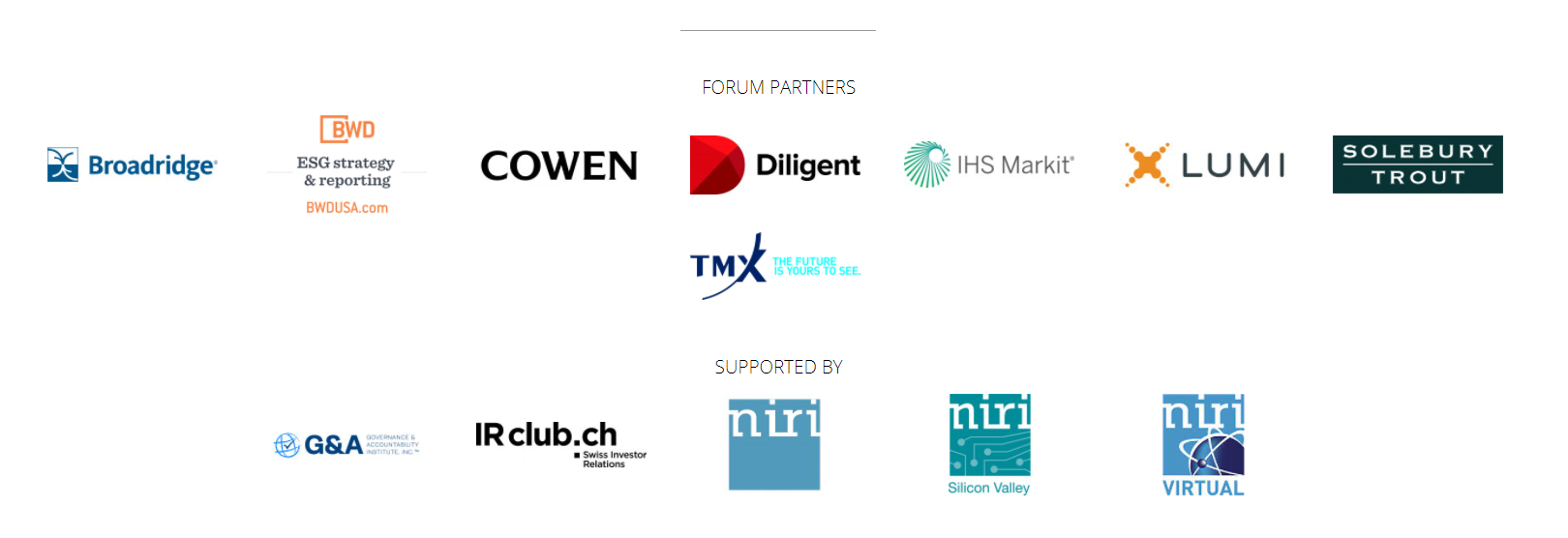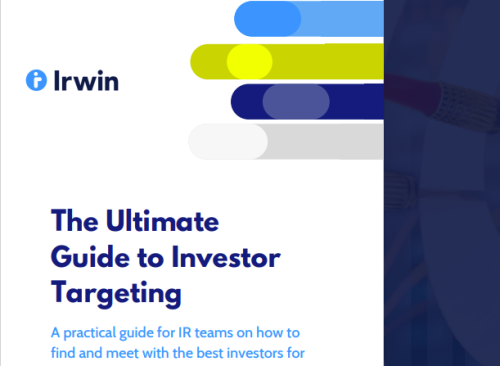After what has proved to be an arresting proxy season with several surprises, the investor relations and corporate governance communities gathered at the ESG Integration Forum – Summer 2021 last month to discuss their takeaways and best practices for ESG engagement and reporting. These are some of the key talking points.
Growing E&S support
Whether it’s Engine No 1’s victory at ExxonMobil or any number of proposals related to the environment or diversity, equity and inclusion (DE&I), Matt DiGuiseppe, vice president of research and ESG at Diligent, said this proxy season has been ‘eye-popping.’
‘Just a couple of years ago, 30 percent was a high level of support for a proposal,’ he told the audience. ‘But now you’re seeing proposals on environmental and social issues receiving 80 and 90 percent support. There really was a theme of a more diverse set of proposals receiving high levels of support.’
DiGuiseppe pointed to the shareholder proposals related to DE&I, which were tailored by filers to have specific relevance for the companies they were being filed at: whether that was through the proposals calling for racial equity audits at companies such as Amazon, Bank of America and Johnson & Johnson, or the New York City Comptroller’s calls for disclosure of EEO1 data.
Manisha Singh, senior portfolio manager at AIG Funds, agreed with DiGuiseppe that it had been a noteworthy proxy season for environmental proposals. This year, 81 percent of voters favored a proposal filed by As You Sow with DuPont, calling for a report into the company’s role in plastic pollution, in one of the more eye-catching results of the season.
‘We can’t discuss the support of environment proposals without talking about BlackRock, State Street and Vanguard,’ Singh said. ‘The three of them own between 30 and 40 percent of most US public companies, so they’re kind of a torchbearer.’ She noted that these firms’ support for shareholder proposals appears to have increased significantly this year.
However, a series of proposals that didn’t get as much traction was the TCI Fund Management calls for say-on-climate votes. ‘I’m actually not too surprised on that,’ DiGuiseppe said. ‘The say-on proposals are really about generating dialogue between companies and management teams, but given the level of dialogue that already exists in the marketplace, shareholders may feel that they can communicate their concerns directly.’
Singh noted that some investors were concerned about the proposals – which call for a non-binding vote akin to the say-on-pay process – having an unintended effect. ‘Advocates of say-on-climate believe that it will help companies develop more robust plans and follow through on them. But critics argue it’s not really the shareholders’ job to micromanage businesses. There are also concerns that many investors blindly sing off on these plans, which could actually lead towards more greenwashing.’
Calls for robust off-season engagement
Of course, one way to conduct an analysis of this proxy season is by looking back at the results and asset managers’ voting patterns. But given the speed at which definitions of materiality are evolving and shareholder support for emerging themes is building, it will be particularly important for issuers to engage with their shareholder during the off-season this year.
For Mei Ni Chu, director of investor relations at Voya Financial, this is helpful both as a debrief on the proxy season and to understand the data the underpins investors’ ESG decision-making.
‘Previously an investor would come to us and talk about how a lot of their research was driven by a reliance on third-party data providers,’ she said. ‘But now there’s a lot of creative data sources and analytics that our investors are using. And they’re coming to us directly and asking some very relevant questions that we need to be experts on.’
Although off-season engagement may traditionally have been spearheaded by the governance team, Chu adds that it’s important that IR plays a role. ‘[IR professionals] have to figure out what our role is in advocating for change in transparency and disclosure,’ she said. ‘But also how to take that feedback from investors and communicate it back into the firm and really help us make the right strategic decisions for the long-term.’
This cross-functional collaboration is important, several panelists noted, because it’s already happening on the buy side. Martin Jarzebowski, director of ESG and responsible investing at Federated Hermes, explained that, as an investor, his firm thinks about ESG engagement with issuers in three ways: engagement during proxy season, engagement by fundamental investors and analysts and engagement by ESG subject-matter experts at the firm.
‘We now have a 17-year engagement database which covers over 20,000 corporate issuers around the world,’ Jarzebowski said. ‘Within those analytics, we have multiple touchpoints – by different themes, sub-themes, engagements, geographies etc. We’re able to quantify and measure the progress and momentum that is happening at any one of the companies in which we engage.’
Integrating ESG into your investor targeting strategy
Shareholder engagement on ESG may feel like risk mitigation to prevent a defeat at the next proxy season, but a number of companies with compelling ESG stories also recognize the opportunity of using it as a differentiator to go out and actively target investors with.
For instance, Chad Reed, vice president of investor relations and ESG at Hannon Armstrong, explained that he has participated in a couple of ESG roadshows in the last two years with very different execution strategies. The first, which concluded just before the initial Covid-19 outbreak, entailed a trip to Europe to meet with a number of long-term ESG-oriented investors. In total, the trip took just less than a week.
Reed noted that since then it has been easier to identify investor targets in North America that are looking to improve their ESG exposure. Coupled with the ease and flexibility of virtual meetings during the pandemic, Reed said that Hannon Armstrong was able to pack the same number of meetings – with both European and North American investors – into one working day.
Meanwhile, Maheen Sayeed, senior associate at IHS Markit, recommended that IR teams conduct a full ESG analysis of their potential investor targets before initiating any kind of targeting plan. This analysis would likely be in addition to the traditional work that goes into a targeting strategy – such as peer analysis (market cap, sector and geography), index inclusion and other factors, she said.
For IR teams looking to demonstrate value, she added, it can be just as helpful to identify when investors may have screens in place that prohibit them from investing in your company, for any number of reasons. The information may not show up during traditional peer analysis, but can be valuable in formulating a future targeting, and ESG, strategy.
Double materiality and other changes to the ESG reporting landscape
One of the most important facets of an ESG program is a robust disclosure plan. As has been the case for several years now, the ESG reporting landscape continues to evolve – and panelists noted that it will only be a matter of time until some form of formal ESG reporting will be mandated by regulators in Europe, North America or globally.
Initiatives such as the Corporate Reporting Sustainability Directive in Europe, the International Financial Reporting Standards Foundation’s Sustainability Standards Board and the International Organization of Securities Commissions’ consultation were all cited by speakers.
During a brief presentation, Alex Gold, head of ESG and chief executive officer at BWD North America, explained the concept of double materiality and why governance, IR and sustainability teams need to be aware of it.
‘Companies are expected to report on sustainability issues that may impact their own enterprise value… while also reporting on the sustainability matters that reflect the business’ impacts on people, environment and the broader economy,’ Gold said. ‘This dual consideration of a business’ ESG impacts on the outside world, while also considering how ESG impacts the business itself, has come to be known as double materiality.’
Gold recommend that issuers consider integrated reporting to engage with the broader discussion in the capital markets around double materiality. He cited the merger between SASB and the International Integrated Reporting Council, to form the Value Reporting Foundation, as an encouraging sign that this work is taking place.
Gold was joined on a panel by Neil Stewart, director of corporate outreach at the Value Reporting Foundation and former executive editor of IR Magazine, who said: ‘The most important thing here is that the integrated reporting framework and SASB standards still exist. You can think of the Value Reporting Foundation as a holding company – a global organization with a unified strategy. We have three principal resources: the integrated thinking principles, the integrated reporting framework and the SASB standards.
‘A really important part of our mission is to continue to simplify the [ESG reporting] landscape, so we want to make it easier to use these three resources together to communicate long-term strategy and provide a really comprehensive view of corporate performance to investors and other providers of capital.’
Elsewhere during the forum, a number of panelists recommended that issuers expand their use of digital media to tell their ESG story.
Joseph Vicari, managing director and practice lead for communications and customer experience at Broadridge, said he’s seeing a growing number of companies put together an annual content calendar for their ESG storytelling – inclusive of blog posts, video interviews and corporate reports.
Similarly, Hannon Armstrong’s Reed explained that his company recently launched an ESG-centric podcast to talk to its stakeholders about the work it’s doing in the space.











